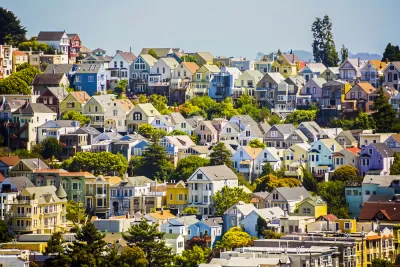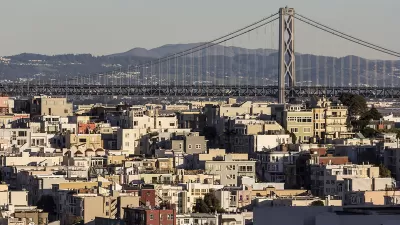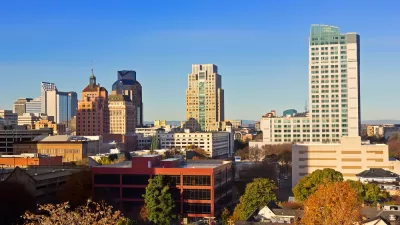Prospects for solving the Bay Area's severe housing shortage look far off. Action on the state level may be one way to approach this crippling collective action problem.

Facing some of the nation's highest prices, the Bay Area has become ground zero for the housing crisis. SPUR president Gabriel Metcalf writes, "The problem was that we needed to figure out where all the newcomers could live without pushing existing residents out. And in this fundamental task of urban governance, we have failed terribly."
Tracing the problem's history, Metcalf defends his organization. "SPUR began sounding the alarm in the late 1970s. Following a citywide downzoning and the early signs of gentrification in some San Francisco neighborhoods, it was clear that the city was headed for a housing shortage."
Ideally, Metcalf writes, the Bay Area would build more housing "at all income levels." To get there, he cites putative policies that encourage density, make places more walkable, fund affordable housing, and defend residents from displacement. Quite a wish list, to be sure.
Metcalf acknowledges the issue's entrenched difficulty, calling the housing shortage a collective action problem with no easy local solution. He wants to see solutions that reach beyond the Bay Area. One example: a new state-level framework for housing approvals, "one that strengthens state housing targets for regional and local governments and makes infill housing easier to build, along with reforming the tax system by letting cities keep more of the residential property tax and rewarding cities that build densely enough in transit-oriented locations."
FULL STORY: The Permanent Housing Crisis

Planetizen Federal Action Tracker
A weekly monitor of how Trump’s orders and actions are impacting planners and planning in America.

Maui's Vacation Rental Debate Turns Ugly
Verbal attacks, misinformation campaigns and fistfights plague a high-stakes debate to convert thousands of vacation rentals into long-term housing.

Cuomo Is the Candidate of Both NIMBYs and Developers. What Gives?
In the New York City mayoral race, odd bedfellows align to preserve the housing status quo.

The Subversive Car-Free Guide to Trump's Great American Road Trip
Car-free ways to access Chicagoland’s best tourist attractions.

San Antonio and Austin are Fusing Into one Massive Megaregion
The region spanning the two central Texas cities is growing fast, posing challenges for local infrastructure and water supplies.

Charlottesville Temporarily Has No Zoning Code
A judge ordered the Virginia city to throw out its newly revised zoning code, leaving permitting for new development in legal limbo.
Urban Design for Planners 1: Software Tools
This six-course series explores essential urban design concepts using open source software and equips planners with the tools they need to participate fully in the urban design process.
Planning for Universal Design
Learn the tools for implementing Universal Design in planning regulations.
Heyer Gruel & Associates PA
JM Goldson LLC
Custer County Colorado
City of Camden Redevelopment Agency
City of Astoria
Transportation Research & Education Center (TREC) at Portland State University
Jefferson Parish Government
Camden Redevelopment Agency
City of Claremont





























